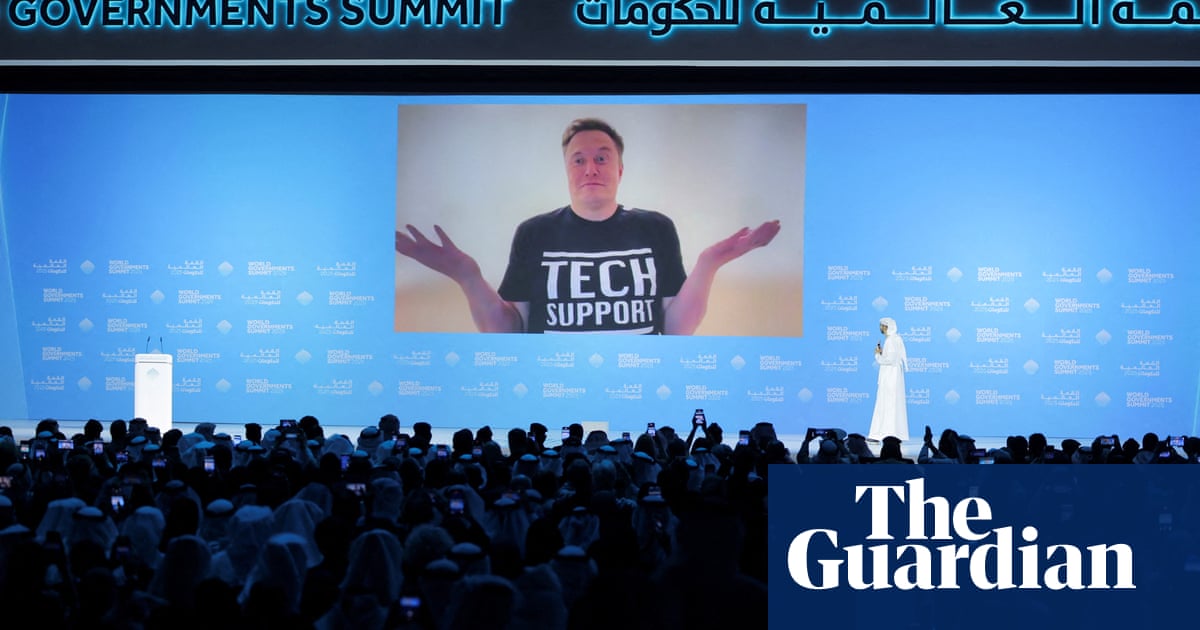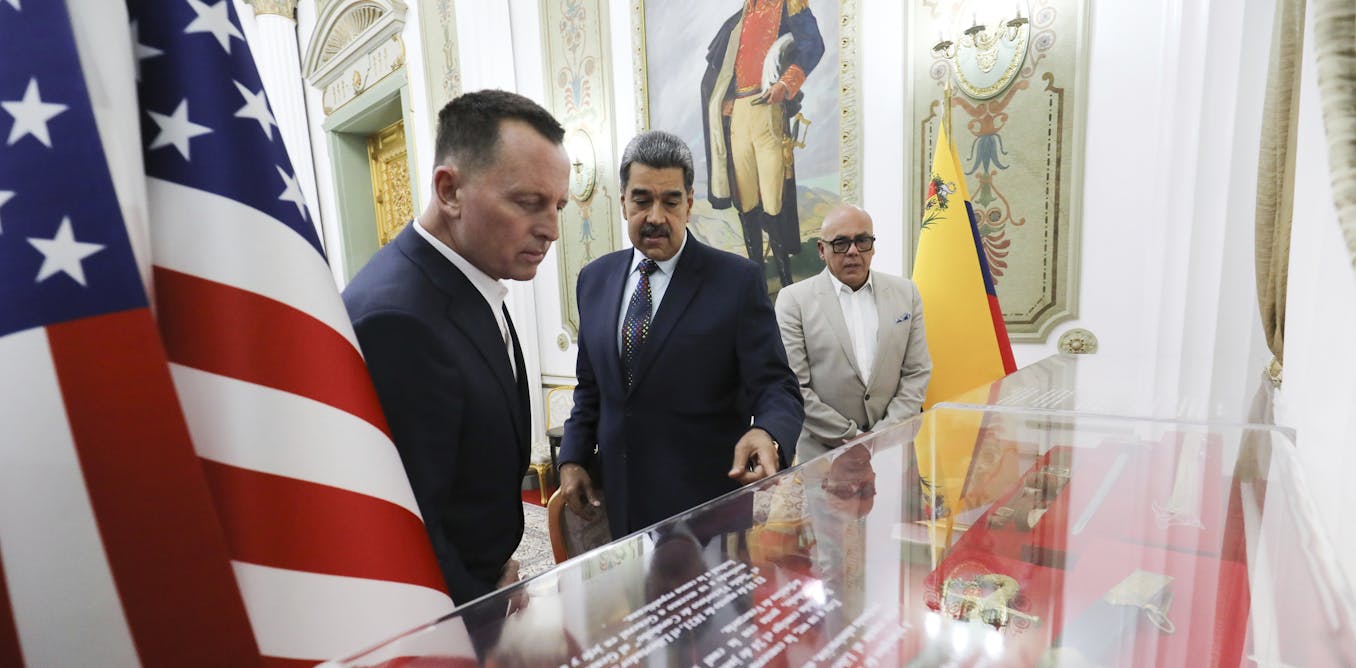From tariff concessions to accepting deportees, India is pulling out all the stops to win favor with President Donald Trump ahead of Indian Prime Minister Narendra Modi’s visit to the White House on Thursday.
India, the world’s largest democracy, enters a second Trump term in a relatively strong position. Trump and Modi, India’s Hindu nationalist leader of more than a decade, have similar worldviews and a personal rapport that goes back years, and India has become a strategic U.S. partner in countering its neighbor China.
“Donald Trump is not a leader who operates with a very sophisticated framework. A lot of it is based on vibes,” said Milan Vaishnav, a senior fellow and director of the South Asia Program at the Carnegie Endowment for International Peace, an international affairs think tank based in Washington.
“And what India has done is make sure the vibes are good.”
Modi is only the fourth foreign leader to visit Trump since his inauguration after the leaders of Israel, Japan and Jordan, which Vaishnav said demonstrates India’s importance to the U.S.
But India could be vulnerable on two issues that Trump has made central to his agenda: tariffs and immigration. The world’s fifth-largest economy has a growing trade surplus with the United States and is its largest source of undocumented immigrants outside Latin America.
Indian tariffs on imported goods averaged 11.5% in 2022, according to the World Bank, compared with 1.5% in the United States, and Trump has called India a “tariff king” and a “big abuser” of trade ties.
In an effort to avoid the kinds of punishing tariffs Trump has threatened against U.S. allies such as Canada and Mexico, Modi has already made some offerings.
They include cutting taxes on some U.S. products — including the iconic Harley-Davidson motorcycle, which Trump had complained about during his first term — and accepting a planeload of Indian deportees last week.
“India has indicated that look, we are happy to negotiate and if it is in mutual interest, we are also prepared to give concessions,” said Amitendu Palit, a former Indian finance ministry official and a senior research fellow at the Institute of South Asian Studies at the National University of Singapore.
A group riding Harley-Davidson motorcycles through Mumbai in 2011. India’s recent budget reduced duties on the iconic American brand.
Trump’s affinity for India and Modi began in his first term, when the two leaders developed a close relationship and did not shy away from putting it on display.
In 2019, the two leaders joined hands at a “Howdy, Modi!” rally in Houston in front of tens of thousands of Indian Americans. The American president received his own lavish welcome in India a year later at a “Namaste Trump” rally attended by thousands in Modi’s home state of Gujarat.
Modi cheered Trump’s election victory in November, calling him a “dear friend.”
“Trump and Modi are like-minded leaders given their common worldviews,” said Chietigj Bajpaee, a senior research fellow for South Asia at Chatham House, a London-based think tank.
“Both are strongman leaders with shared perceptions of China and radical Islam as existential threats, a mutual animosity of the liberal media and civil society, well-entrenched economic nationalism and a value-neutral foreign policy dictated by self-interest.”
Vaishnav said their closeness could help in the negotiations.
“These are the things that, believe it or not, I think create a lot of goodwill with Trump,” Vaishnav said. “I do think that that personal relationship is going to matter.”
Trump and First Lady Melania Trump with Modi in Ahmedabad, India, in 2020.
Modi, who lost his outright parliamentary majority in last year’s general election in part over economic concerns, is keen to make deals with the U.S., one of India’s largest trading partners.
India, the world’s largest arms importer, may agree to buy more U.S. defense equipment, as Modi and Trump discussed in a call last month during which Trump also emphasized the importance of having “a fair bilateral trading relationship,” according to a White House readout.
Energy is also likely to be on the agenda, with Modi possibly agreeing to buy more U.S. liquefied natural gas and crude oil. India, which tries to avoid choosing sides in major international conflicts, was the largest U.S. market for crude oil exports in 2021 but has since ramped up purchases of Russian oil that is heavily discounted due to international sanctions over its war in Ukraine.
Earlier this week, Modi also met with Vice President JD Vance on the sidelines of an AI summit in Paris, where they discussed potential Indian investment in U.S. nuclear technology, according to the White House.
In addition to avoiding tariffs, Modi hopes to attract investment from U.S. companies, including tech and electric car manufacturers such as Tesla.
He may also seek help in two U.S. legal cases: the fraud and bribery charges against billionaire tycoon Gautam Adani, a Modi ally, and the indictment of a former Indian government employee accused of orchestrating the attempted assassination of a Sikh separatist leader in New York.
Modi is welcomed at the White House in 2017.
One possible point of friction is immigration, both legal and illegal. India is the third-largest source of undocumented migrants in the U.S. after Mexico and El Salvador, according to the Pew Research Center.
Last week, a U.S. military plane carrying 104 Indian migrants arrived in a northern Indian city in the first such flight to India since the start of Trump’s crackdown on unauthorized immigration.
Opposition lawmakers protested the alleged mistreatment of the Indian deportees, with some gathering outside the parliament in New Delhi carrying signs that said “Indians insulted.”
“Indians deserve Dignity and Humanity, NOT Handcuffs,” Rahul Gandhi, the leader of the opposition Congress party, wrote on social media platform X.
Modi has not publicly commented on the matter, but his foreign minister, S. Jaishankar, told lawmakers last week that “it is the obligation of all nations to take back their nationals, if they are found to be living illegally abroad.”
Vaishnav said the flights are likely to continue. “But I think we will see an improvement in terms of the optics,” he added.
Modi is also expected to push for the expansion of H-1B visas that bring skilled foreign workers to the U.S. tech sector, 75% of which go to Indian nationals. The issue has already caused a rift between two competing camps of Trump advisers, tech evangelists and immigration hard-liners.
“One of the objectives of trying to build goodwill with the Trump administration on illegal immigration is to try to give India space on legal migration and labor mobility,” Vaishnav said.
“For now, Trump has sided with the kind of pro-high-skilled-immigration crowd, but he’s very fickle, right?”
This article was originally published on NBCNews.com

 German (DE)
German (DE)  English (US)
English (US)  Spanish (ES)
Spanish (ES)  French (FR)
French (FR)  Hindi (IN)
Hindi (IN)  Italian (IT)
Italian (IT)  Russian (RU)
Russian (RU) 


























Comments